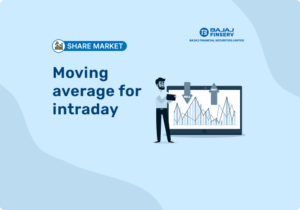What is a Cover Order?
Last Updated on October 30, 2023 by BFSLTeam BFSLTeam

When you step into the world of stock trading, you’re not just putting in the exact amount of money for your trade. Instead, you give a bit extra, known as margin, to your broker. This extra bit ensures that any risks related to the trade are covered. The stock market also sets a specific minimum margin requirement for each trade.
Now, there’s something intriguing called a cover order that traders can opt for if they want to reduce the margin they pay and get more trading power. Both traders and brokers can make good use of cover orders to gain more trading power when dealing with stocks, futures, options, and commodity contracts. Since the risks are lower with this type of order, you also need less margin to get started.
In this article, we’ll unravel what a cover order means, explore how it functions, discover the various types of covers, and explore the art of using them for successful trading.
Table of Content [hide]
What is Cover Order?
In simple words, a cover order is a smart way of trading. It lets you do two things at once: place a primary order and a stop-loss order. This smart combination works like a strong shield against unpredictable parts of the market. Think of it like wearing a safety belt before driving a car – it’s like having an important layer of safety that can be really valuable.
Understanding the Cover Order Meaning
To understand the meaning of a cover order, envision a scenario where you’re looking to acquire 100 shares of Company XYZ, which is presently trading at ₹150 per share. Sensing that the price is about to go up, you decide to use a cover order strategy.
In this scenario, your primary order revolves around purchasing 100 shares of Company XYZ at the ongoing market rate of ₹150. At the same time, you set up a stop-loss order at ₹140. This means that if the share price goes down to ₹140, the stop-loss system kicks in and automatically sells the shares, restricting potential losses.
To grasp the concept better, let’s look at two potential scenarios:
- Favourable Scenario: Company XYZ’s share price indeed rises to ₹160. As your primary order secures a purchase at ₹150, the stop-loss order remains dormant. You’ve effectively gained ₹10 per share, culminating in a substantial profit of ₹1000 (₹10 * 100 shares).
- Unfavourable Scenario: Unexpectedly, Company XYZ’s share price plunges to ₹140. Consequently, the stop-loss mechanism is activated, leading to an automatic sell order at ₹140. This strategic move reduces the possible losses to just ₹10 for each share, giving you some protection from a bigger drop in value.
Types of Cover Order
Cover orders come in two distinct varieties: the short cover order and the long cover order. Each variant serves as a tailored response to diverse trading strategies and the ever-shifting conditions of the market landscape.
Short Cover Order
When you anticipate a downtrend in a stock’s price, the short cover order is your go-to strategy. Imagine, you initiate a sell order as your primary action and complement it with a stop-loss buy order set at a higher price. If, contrary to your projection, the share price exhibits an unexpected upswing, the stop-loss buy order kicks in and prevents you from the possibility of further losses.
Long Cover Order
Conversely, if you predict an upward trajectory for a stock’s price, the long cover order steps in. Here, your primary move involves a buy order, while the stop-loss sell order is strategically placed at a lower price. If the share price suddenly drops a lot, the stop-loss sell order comes into play. The stop-loss sell order acts as a protective shield, preventing big losses.
Benefits of Cover Order
- Effective Risk Management: The foremost advantage of incorporating cover orders into your trading strategy lies in their remarkable prowess in managing risk. By initiating both the primary order and the stop-loss order in tandem, you create a fortified shield against potential losses. This approach ensures that your exposure to sudden market downturns is limited, allowing you to safeguard your trading capital.
- Guarding Against Volatility: The tempestuous nature of the stock market is a well-known phenomenon, where prices can exhibit unpredictable swings within a short span. In this context, cover orders act as a stalwart guardian, offering a buffer against the impact of abrupt price fluctuations. This protection is particularly crucial during turbulent times, helping you stay resilient in the face of market upheavals.
- Upholding Trading Discipline: Emotional decision-making often spells disaster in the world of trading. Cover orders play a pivotal role in cultivating and maintaining trading discipline. By automating the execution of stop-loss orders, these mechanisms eliminate the impulse to cling to underperforming positions in the hope of a miraculous turnaround. This, in turn, instils a disciplined and rational approach to trading, ultimately leading to more informed decisions.
- Capital Utilisation Efficiency: Cover orders also contribute to efficient capital utilisation. As you set predefined stop-loss levels, you gain better control over the extent of potential losses. This control empowers you to allocate your trading capital strategically across multiple trades while ensuring that individual losses are contained, thus maximising your overall trading potential.
Drawbacks of Cover Order
- Slightly Elevated Brokerage Costs: While the benefits of cover orders are substantial, it’s important to acknowledge that some brokerage firms might levy marginally higher brokerage fees for processing cover orders. This added cost stems from the intricacies involved in managing two interconnected orders simultaneously. Therefore, it’s prudent to weigh these incremental costs against the potential advantages before adopting cover orders as a staple of your trading strategy.
- Influences of Price Volatility: In highly volatile market conditions, the efficacy of cover orders can occasionally be compromised. Rapid and extreme price fluctuations can trigger the activation of stop-loss orders prematurely, leading to unexpected sell-offs before the anticipated price rebound materialises. This potential downside underscores the importance of understanding market conditions and fine-tuning your stop-loss levels to account for the inherent volatility of specific stocks or market segments.
Conclusion
Cover order is an important instrument in the trader’s toolkit. It acts as a shield to protect you from unexpected changes in the market. It helps to manage risks, keep your money safe, and make sure you trade in a smart and disciplined way. But even though cover orders are good at reducing risks, they are not perfect. Markets can be unpredictable, so it’s important to do careful research and think carefully when you trade.
Whether you’re just starting out in trading and want to protect your money, or you’re an experienced trader aiming to optimise your strategies, using cover orders wisely can help you succeed. Remember that while cover orders can help you when the market is shaky, they work best when you also think carefully and do good research before making trades.

